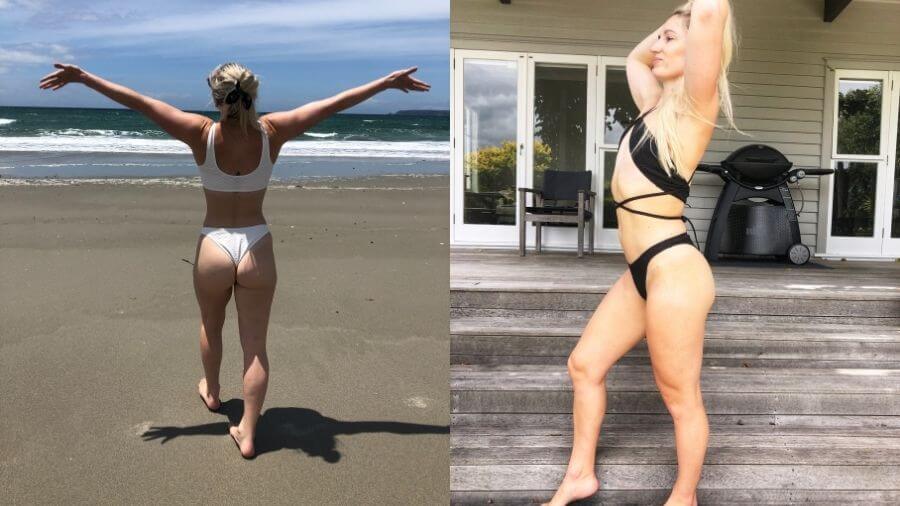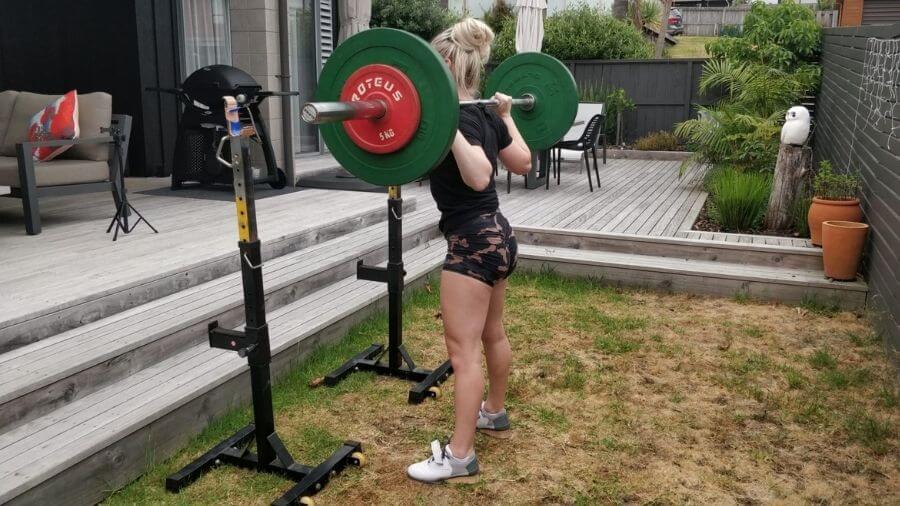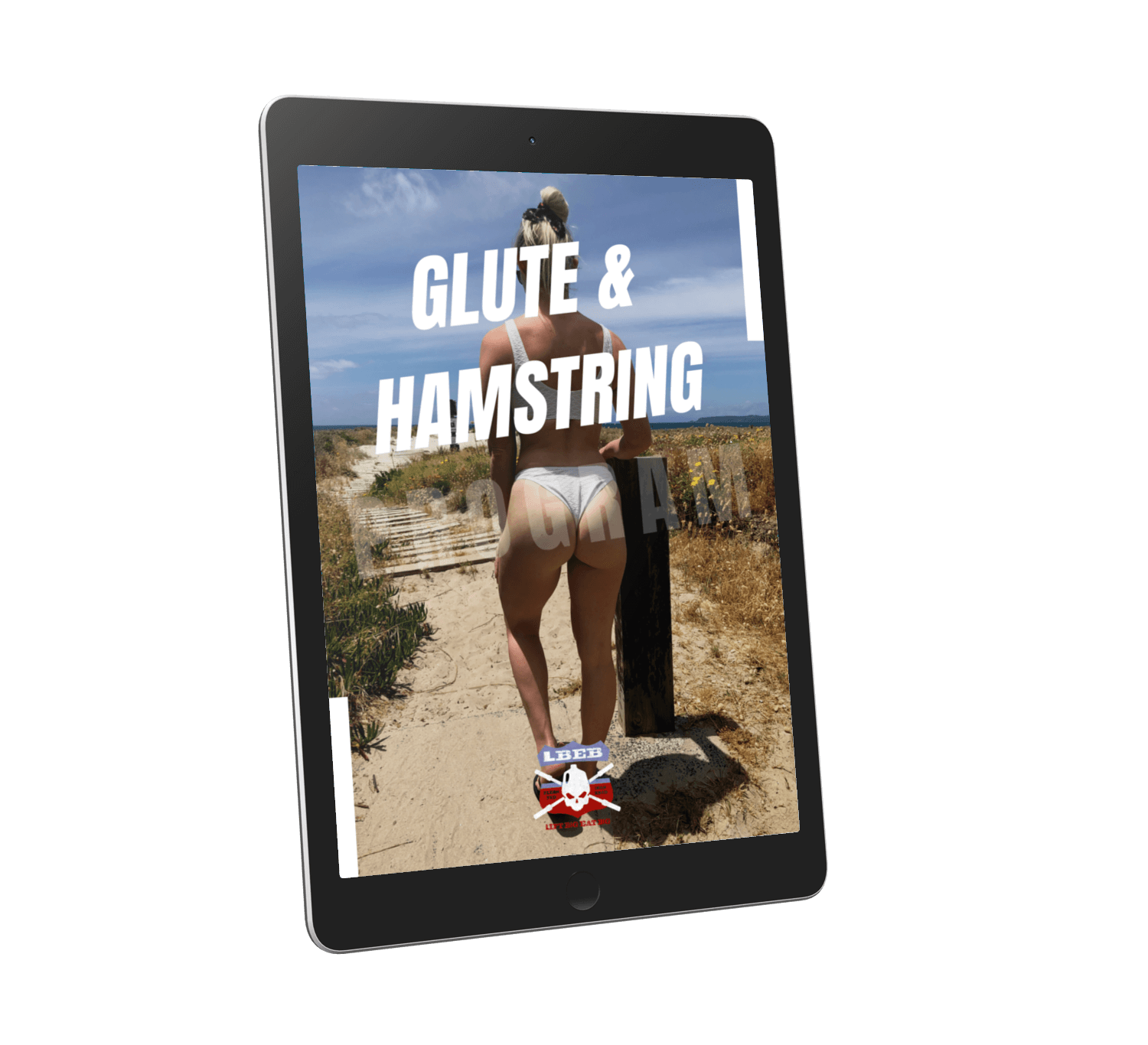The quest for a big booty has only been heightened with the rise of social media. But many of the exercises you see these “fitness influencers” doing are trash and won’t do a thing for getting a bigger butt. What about the less fancy squat?
Squats make your butt bigger by growing the gluteal muscles which are prime movers during the squat movement.
But there are many ways to perform the squat. Front and back squat, low and high bar, is there a best way to squat to make your butt bigger?
Table of Contents
Do Squats Make Your Butt Bigger?

Squats have fallen out of favor recently for growing a bigger butt, with the hip thrust taking the mantle as the best booty builder. But the squat is a tired and true exercise to build the glute muscles into peaches.
However, there are two ways to look at this:
- Those who hold a higher level of body fat.
- Those that are quite lean with low levels of body fat.
For those who carry more body fat, squats may make your butt smaller since the exercise will help you lose fat mass and gain muscle mass (depending on your diet and training age). It will add more shape to your behind.
Squats will make your butt bigger as you add muscle to your glutes for those who are leaner. But why squats? Aren’t they used to build big legs? While the quadriceps are prime movers for the squat, so are the glutes.
Specifically, the gluteus maximus, which is the most significant muscle of the butt. The glutes are primarily responsible for hip extension. The opposite movement occurs at the bottom of a squat with large degrees of hip flexion.
Meaning glutes are put under immense stretch with load, which increases mechanical tension resulting in a potent muscle-building response. But not all squats are made equal. For example, back squats elicit 13% greater glute activation than front squats due to a greater forward lean [1,2].
We can break this down further and see low bar back squats elicit greater glute activation than high bar squats [3]. That’s not to say you can’t high bar squat get a bigger butt. You’ll still heavily target the glutes, and you can finish them off with other hip extension exercises like Romanian deadlifts.
But ideally, low bar squats will give you the most considerable stimulus for growing your booty.
How To Squat For A Bigger Butt

We’ve concluded that the low bar back squat is the ideal squat variation when building a bigger butt. Here’s how to do it to target your glutes:
- Rack the barbell across your rear delts, which will be below your upper traps where the high bar position is.
- Unrack the bar and take two steps back. Have your toes pointing slightly out and your feet outside shoulder width.
- Slowly descend by breaking at the knees and hips simultaneously. Push your knees out as you sit down. This will allow you to sit between your hips.
- Maintain a big chest as you descend into the hole.
- Once your hamstrings touch your calves, forcefully drive with your legs back to the starting position.
- At the top, squeeze your glutes.
For whatever reason, if you struggle with the low bar position, use the high bar squat. You still hammer the glutes if you squat deep, and you’re going to perform other targeted glute exercises afterward anyway.
Common Squat Mistakes Halting Butt Growth

These common squat mistakes will hold back your quest for a bigger butt. Avoid these at all costs!
Performing Half Squats
The commercial gym classic. Lifters loading far too much weight on the bar and performing small knee bends. There’s an excellent research paper illustrating the full squat elicits far greater muscle growth of the glutes than half squats [4].
If you can reach ass to grass, you’re doing it right for your bigger butt. The glutes perform more work by being put under a greater range of motion.
Dive Bombing The Squat
When lifters squat for performance and put up big squat numbers, the eccentric phase or descent is often fast. Because the faster the eccentric, the more elastic energy that you can return during the concentric, allowing you to lift more weight.
But for building muscle, we want a slow and controlled eccentric phase. We can deliberately place more tension on the glutes and perform more work during the descent.
Not Pushing The Knees Out
The knees only tracking forward is a common mistake for beginner squatters. There are two main issues with this:
- The knees moving out allow you to sit between your legs and squat deep. When your knees only track forward, eventually, you run out of room (unless you have otherworldly ankle mobility), and your squat will be cut short.
- The glute medius is responsible for externally rotating the hip. By pushing the knees slightly out, you engage more of your gluteal muscles.
By far, this is the most comfortable way to squat. It doesn’t mean pushing them out as far as possible. But when your feet are turned slightly out, you want your knees to track your middle toe. Feet facing directly forward is a big mistake.
Lifting The Heels Off The Floor
This mistake is as common as the others but, when done, will kill your glute gains. When your heels come off the floor when squatting, your weight is towards your toes and the ball of your feet. This increases the stress on the knees and quadriceps and moves it away from the glutes.
Summary
Squats may make your butt smaller as you lose body fat for lifters who have higher body fat. But those in normal body fat ranges, squats will make your butt bigger by growing the gluteal muscles. Squat deep, heavy, and often for a big booty!
I was featured at houseofpeach.com detailing my best glute exercises you can check out.
Grow Enormous Legs That Won’t Fit Your Jeans
A leg specialization program to bust through muscle growth plateaus and finally throw away those skinny jeans.
References
1. Neto, W. K., Soares, E. G., Vieira, T. L., Aguiar, R., Chola, T. A., de Lima Sampaio, V., & Gama, E. F. (2020). Gluteus maximus activation during common strength and hypertrophy exercises: A systematic review. Journal of sports science & medicine, 19(1), 195.
2. Krzyszkowski, J., & Kipp, K. (2020). Load-dependent mechanical demands of the lower extremity during the back and front squat. Journal of Sports Sciences, 38(17), 2005-2012.
3. Murawa, M., Fryzowicz, A., Kabacinski, J., Jurga, J., Gorwa, J., Galli, M., & Zago, M. (2020). Muscle activation varies between high-bar and low-bar back squat. PeerJ, 8, e9256.
4. Kubo, K., Ikebukuro, T., & Yata, H. (2019). Effects of squat training with different depths on lower limb muscle volumes. European journal of applied physiology, 119(9), 1933-1942.

